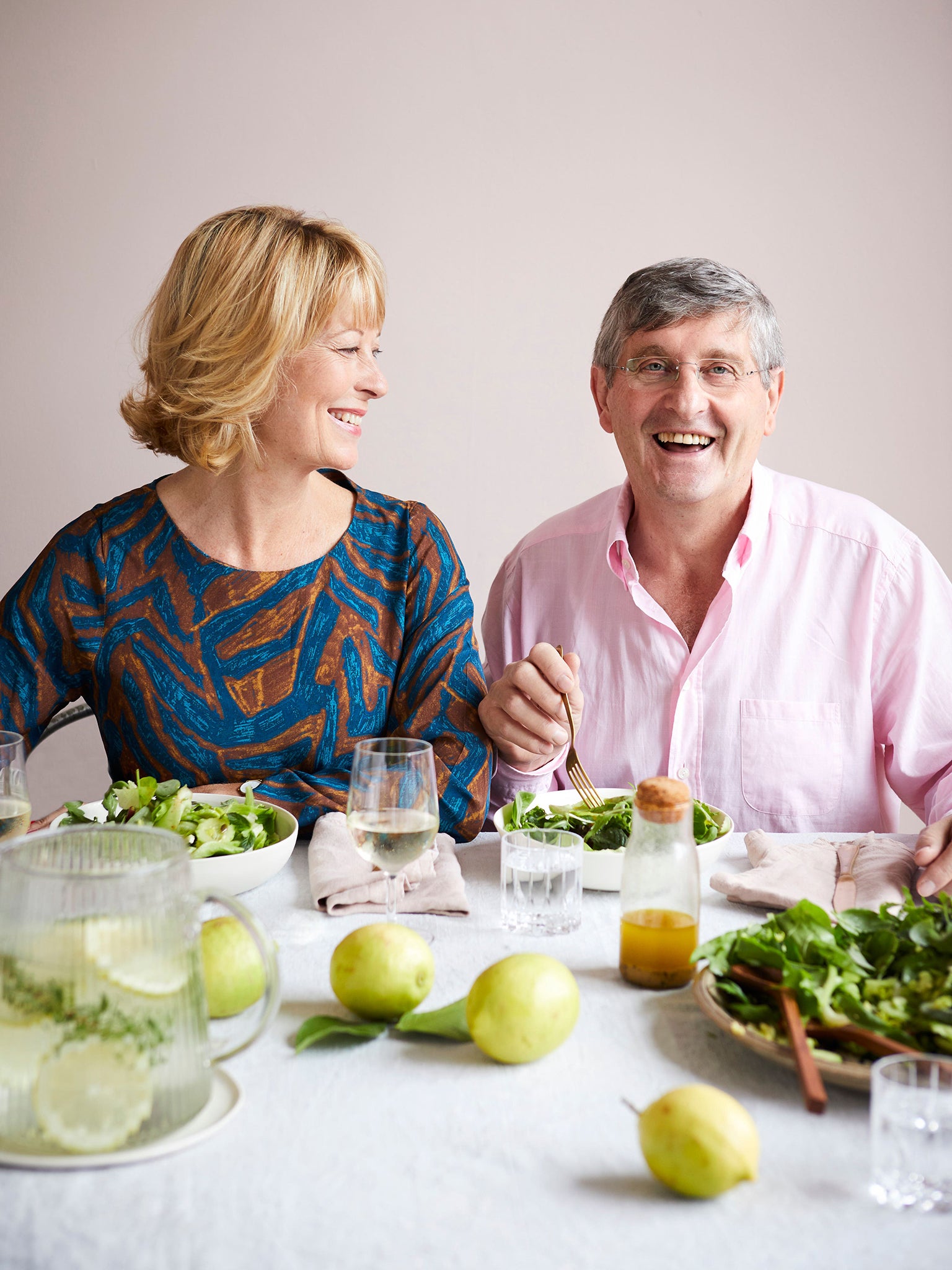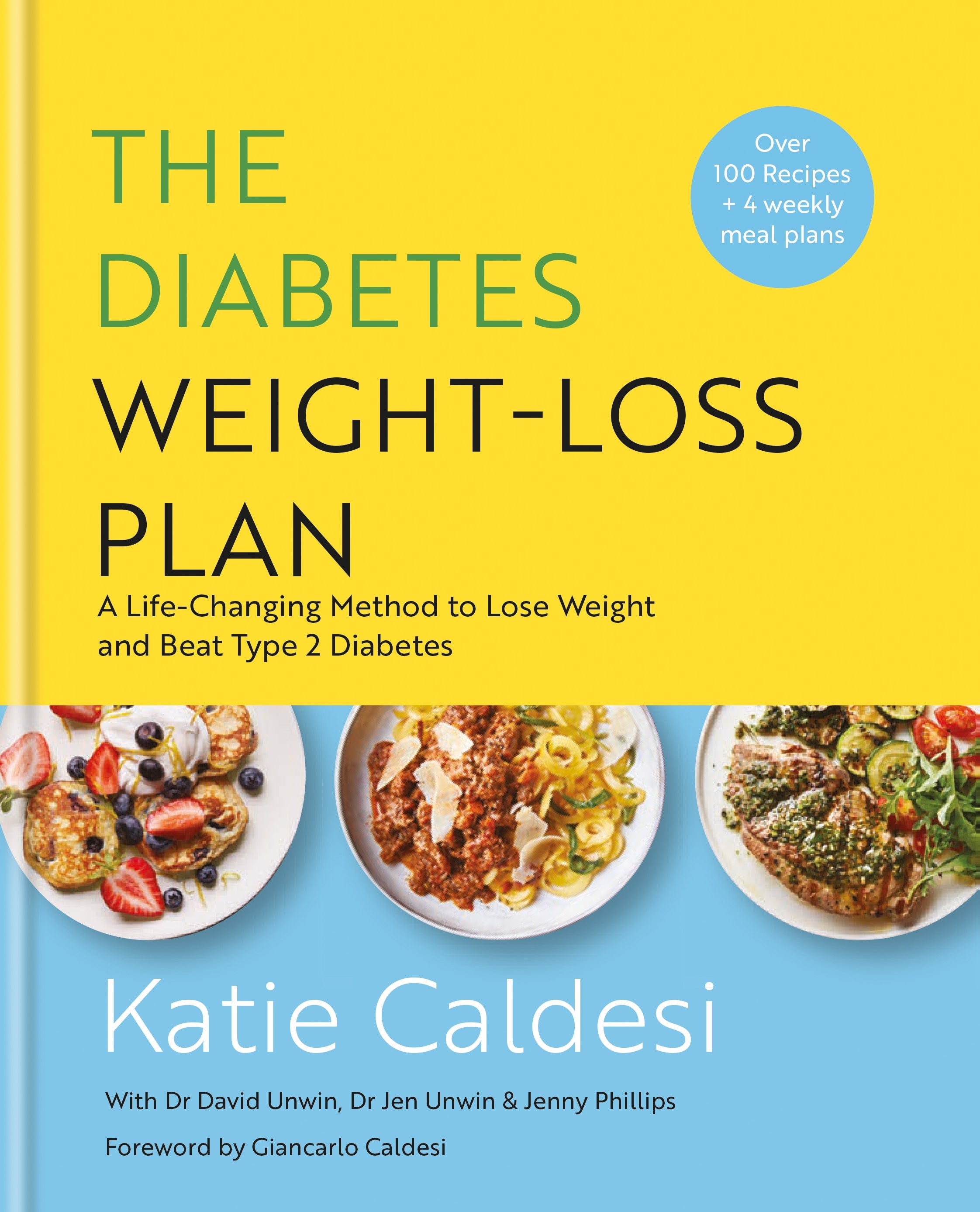‘It probably saved my life’: How a low-carb diet can help with type 2 diabetes
After he was diagnosed with type 2 diabetes, Giancarlo and his wife Katie went on a journey to discover the low-carb diet that would eventually put him in remission

When Katie Caldesi’s husband, Giancarlo, was first diagnosed with type 2 diabetes over a decade ago, the couple “didn’t take it seriously”.
Caldesi and her husband are restaurateurs, so food is a massive part of their daily life – and they initially didn’t consider making any major changes to Giancarlo’s diet.
“We didn’t take it seriously, we just thought, ‘Oh well, lots of people have that’. It’s just one of those things,” Caldesi, 60, says.
Giancarlo, now 72, was told to cut back on his sugar, so he stopped taking it in his coffee, “But there wasn’t much [more] information available at that time,” Caldesi says.
But then he got “much worse”, she remembers. “He was told he was gluten intolerant, he had all sorts of aches and pains, he had terrible gout, terrible arthritis.”
This spurred him to give up gluten – no mean feat for a pasta-loving Italian – which Caldesi says “probably saved his life”.
From there, the couple went on a journey to discover the low-carb diet. In 2015, Giancarlo’s type 2 diabetes had been turned into pre-diabetes, and by 2017 he was in remission.
Caldesi doesn’t have type 2 diabetes, but she says she’s benefited from a low-carb lifestyle. “You have more energy,” she says.

“Many years ago as a secretary I used to have a high-carb lunch, and I used to have a slump after lunch at my typewriter and think that was normal. But it’s not normal to have a dip mid-afternoon – there’s no need for your body to feel like you need a nap.”
She adds: “If you keep your sugar levels stable, you don’t get the tiredness and you don’t get the extreme hunger. I had to eat as soon as I got out of bed, because I thought I’m going to faint if I don’t eat. And now I go without breakfast most mornings.”
Buckinghamshire-based Caldesi has written her 18th cookbook, dedicated to crafting a low-carb eating plan. It’s advisable to see a doctor if you have any queries around type 2 diabetes or your personal health, but these are Caldesi’s tips for anyone who wants to try a low-carb diet.
Know that starch is sugar
This is the first point Caldesi wants everyone to know: “Starch breaks down to sugar, and I still think most people don’t realise that.”
She suggests that when Giancarlo first gave up sugar, it didn’t make much of a difference because he was still eating a lot of starchy foods.
“That’s the message he needed to have from the start, because I don’t think we really understood that starch breaks down to sugar, and so giving up sugar is one part of carbohydrate – but the other part of the carbohydrate is the starch.

“Clearly giving up sugar didn’t help his diabetes, because it got worse. It wasn’t until we gave up the starch element that he started to not only lose weight very quickly, but the inflammation went down, his arthritis went, his gout went. And when he got checked for his HBA1C [a test of your blood sugar levels] it came down to pre-diabetes levels, and then eventually came down to normal levels.”
Use alternatives
When Giancarlo first had to give up gluten, Caldesi says she “started experimenting” with his favourite recipes, finding a low-carb option.
“I remember giving him his favourite ragu recipe, which is his father’s, sort of like a bolognese – a meaty Tuscan ragu,” she recalls.
“I remember giving him that on ribbons of white cabbage, that really looked like tagliatelle” – and he loved it.
That’s her favourite hack for a low-carb diet: “Using non-starchy vegetables as an alternative to [things like] pasta has been a game-changer for us. You can do so many things with courgettes and leeks and mushrooms – really delicious alternatives to pasta, and you have the same pasta sauce.”
But you don’t have to cut out pasta entirely.
Caldesi says: “Pasta isn’t all bad. In small portions, it’s not the end of the world. But I mix, say, 25 grams of pasta with courgette ribbons – that’s really nice, because then you feel you’ve had a bit of pasta and you’ve got the bite of pasta.”
Don’t make things restrictive
Instead of cutting out all the things you love, Caldesi emphasises the importance of replacing less healthy food with something delicious – that might be slightly better for you.
She particularly realised this when slowly shifting her children onto a low-carb diet.
“I took crisps away and I put cheese and almonds out instead,” she says. “The boys never said, ‘Where are the crisps?’ They never seemed to miss them.”
Similarly with her husband, she knew he liked a sweet treat after a long shift at the restaurant, so she made small desserts – “chocolate mousse or an almond sponge pudding or something like that” – and he had them instead.
“If you just take things away, it’s miserable,” she says, so it’s about finding something that will work just as well instead.
Don’t worry if you fall off the wagon
Going all-in on the low-carb diet can be daunting, so Caldesi doesn’t want you to stress if you don’t stick to things 100 per cent of the time.
A lot of the time, people might fall off the wagon and then give up entirely, because they think they’ve “ruined it now”, Caldesi explains.
“But actually, it doesn’t matter. Giancarlo and I will indulge on holiday,” she says, but then resume the diet when they’re home.
“If you’ve overindulged, don’t blame yourself. I hope you really enjoyed it – and then get back on track again.”
‘The Diabetes Weight-Loss Plan’ by Katie Caldesi (Kyle Books, £22).
Join our commenting forum
Join thought-provoking conversations, follow other Independent readers and see their replies
Comments
Bookmark popover
Removed from bookmarks